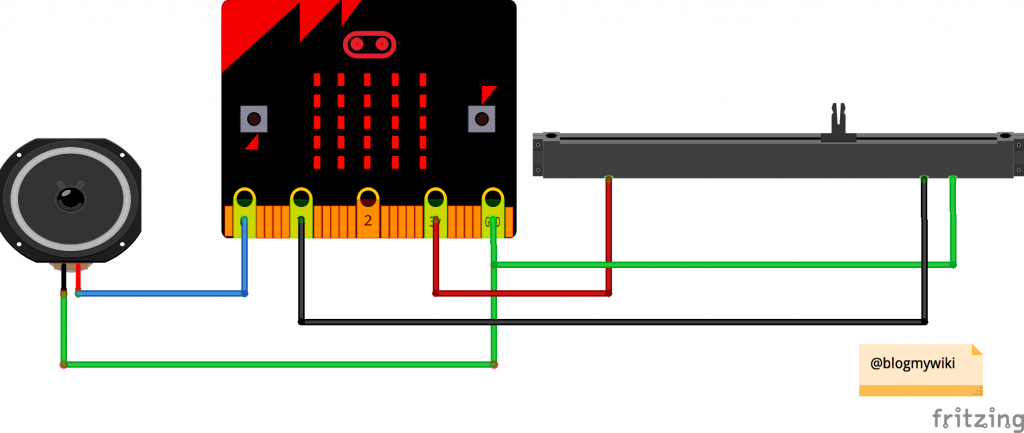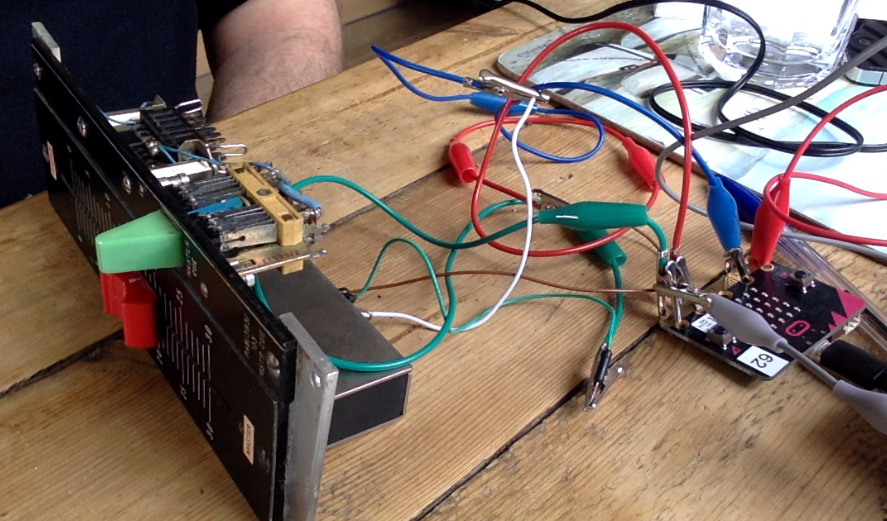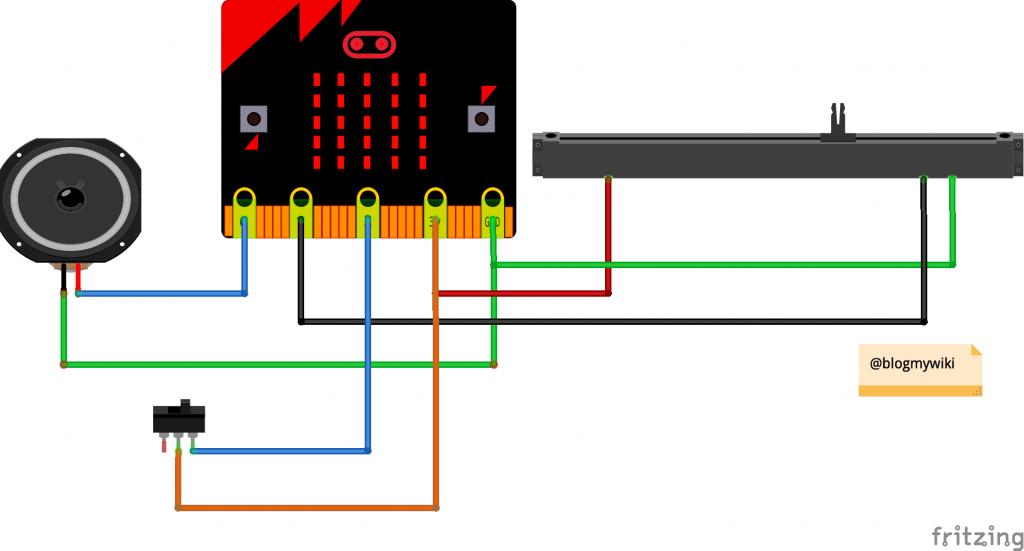Today I made a (sort of) electronic musical instrument with a BBC microbit and an old BBC radio studio fader.
It’s wired up like I did previously, only I used pin 1 in place of pin 0 – as pin 0 is used for connecting the speaker.
Here’s the Python code, all 8 lines of it – perhaps someone musical can give me better arpeggiator numbers!
from microbit import *
import music
while True:
fader_reading = pin1.read_analog()
display.scroll(str(fader_reading),wait=False)
music.pitch(fader_reading, 100)
music.pitch(fader_reading+100, 100)
music.pitch(fader_reading+200, 100)
UPDATE
I’ve now wired up the green cue switch to change the tempo and tweaked the arpeggio notes a bit. The cue switch on the BBC DK4/19 mixing desk was insanely clever. This totally analogue desk let you assign any source to any channel using a rotary selector. The cue switch would then put the appropriate green cue light on if a microphone was selected, start a tape machine if a tape machine was selected, fire off a cart if a cart machine was selected, or signal an outside source (e.g. give a remote studio a red light and put their desk in transmission mode).
Anyway, I digress… I’ve also made the A and B buttons on the microbit stop and start the thing as it does get annoying very quickly.
The circuit now looks a bit like this:
Here’s the new Python code:
from microbit import *
import music
c = 131
e = 165
g = 196
duration = 150
started = False
while True:
if button_a.was_pressed():
started = True
while started:
if pin2.read_digital() == 1:
duration = 100
else:
duration = 150
fader_reading = pin1.read_analog()
music.pitch(fader_reading, duration)
music.pitch(fader_reading+c, duration)
music.pitch(fader_reading+e, duration)
music.pitch(fader_reading+g, duration)
if button_b.was_pressed():
started = False



